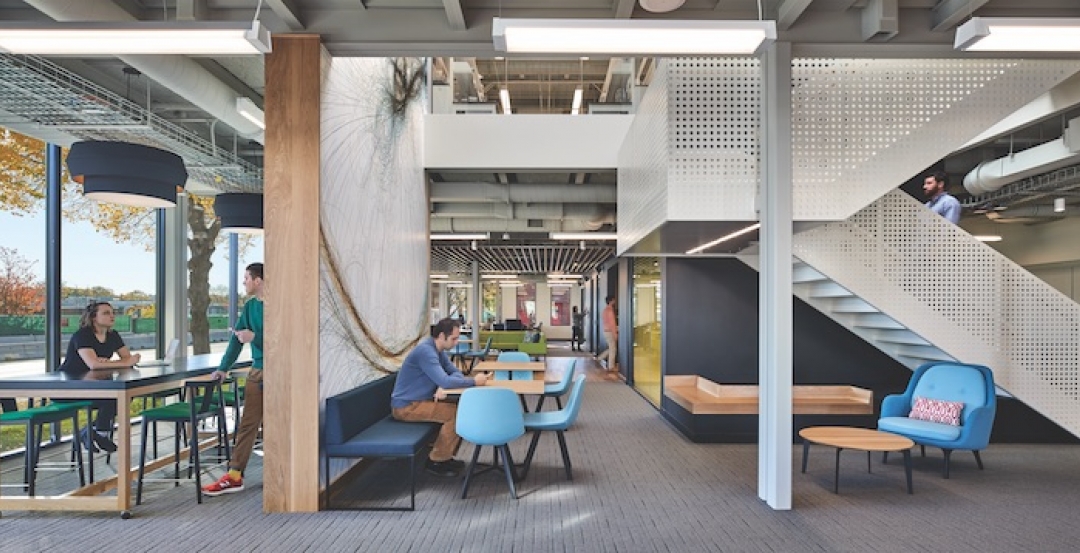Students at the University of Utah can choose to live in an on-campus environment that’s immersed in discovery and entrepreneurship. The 400-bed Lassonde Studios residential hall features a 20,000-SF innovation space where residents can test ideas, build prototypes, and launch companies. Designed by CannonDesign’s Yazdani Studio, in association with EDA Architecture, the building reflects a broader trend toward hands-on spaces that encourage students to collaborate within and beyond the physical campus.
“Universities are increasingly interested in the commercialization of technologies or research that offer opportunities to partner with the private sector,” says Don Hensley, VP and Education Sector Leader (U.S. West) with Stantec.
The Center for the Sciences & Innovation at Trinity University, San Antonio, designed by EYP Architecture & Engineering, features “The Cube,” a high-performance space maker with movable walls, mobile team stations, and gigantic garage doors to support entrepreneurial interaction among students and faculty.

“There’s increased demand for spaces that physically bring students together—across disciplines—to work collaboratively on a wide variety of creative projects,” says John Baxter, AIA, LEED AP, Higher Education Sector Leader at EYP. “These specialized spaces elevate maker hands-on, project-based learning and provide experiential opportunities within a structured, mentored environment.”
Today’s multi-functional buildings support a diverse range of academic programs, with transparent walls to foster interdisciplinary collaboration. “The idea is to literally and figuratively break down the walls between departments so that students and faculty are working together more consistently and organically,” says Hensley.
A nationwide focus on science and technology buildings is helping universities compete for researchers and grants, as well as to increase their enrollment of students pursuing degrees in science, technology, engineering, and math.
The new Yale Science Building is designed with flexible laboratories to accommodate interdisciplinary research in molecular, cellular, and developmental biology; molecular biophysics and biochemistry; and atomic, molecular, and optical physics. Pelli Clarke Pelli Architects and Stantec collaborated on the seven-story, 300,000-SF building, which will be constructed in the campus’s Science Hill precinct.
PS: read our Concrete block machine: description and price














